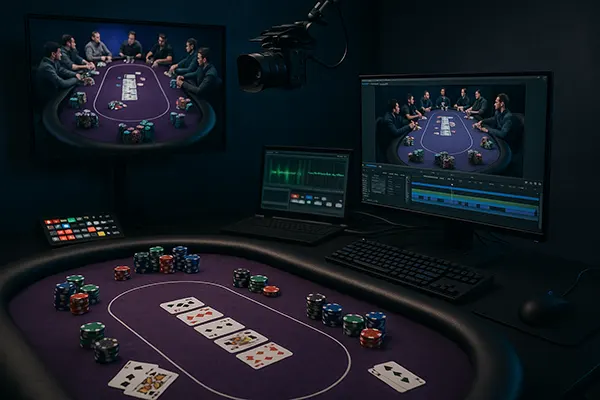Poker Mathematics: How to Calculate Winning Odds in Different Situations

Poker is a game of skill, psychology, and, most importantly, mathematics. Understanding how to calculate your odds of winning in different situations is crucial to making profitable decisions at the table. In this article, we will break down key poker mathematical concepts and provide practical examples to help players improve their strategy.
Understanding Pot Odds and Expected Value
Pot odds refer to the ratio of the current size of the pot to the bet you need to call. Comparing this ratio to the probability of completing your hand helps determine whether a call is profitable.
For instance, if the pot contains £100 and your opponent bets £50, you need to call £50 to win £150 (£100 + £50). This gives you pot odds of 3:1. If the probability of hitting your winning hand is greater than 25% (1 in 4), calling is mathematically correct.
Expected Value (EV) takes this concept further. Positive EV means a move is profitable over the long run, while negative EV suggests it leads to losses. Combining pot odds with EV analysis enhances strategic decision-making.
How to Calculate Pot Odds in Practice
To determine whether to call, fold, or raise, you should calculate your drawing odds. Let’s say you have a flush draw with nine outs on the turn. The probability of hitting your flush on the river is approximately 19.6%. If your pot odds suggest you need 25% equity, folding is the better decision.
To make quick calculations at the table, use the “Rule of 4 and 2”: multiply your outs by 4 when calculating turn and river equity, and by 2 if considering just the river.
For example, if you have an open-ended straight draw (eight outs), multiplying by 4 gives you roughly a 32% chance of completing your hand by the river.
Calculating Hand Equity with Poker Odds
Hand equity is the probability of winning the hand at showdown. Equity calculations help determine whether a move is profitable based on opponents’ likely ranges.
Using software or memorising common probabilities can be beneficial. For example, pocket aces versus pocket kings preflop have an 82% vs. 18% equity distribution. If an opponent raises aggressively, you can estimate their range and calculate your winning chances accordingly.
Equity is particularly useful in all-in situations. If you push all-in with AK suited against a pocket pair, knowing your equity helps in decision-making.
Practical Application of Hand Equity
Consider a scenario where you hold AQ suited against a loose opponent’s range. Using a poker equity calculator, you find AQ has approximately 55% equity versus their likely holdings. If the pot odds suggest a profitable call, proceeding with the hand makes mathematical sense.
Applying equity knowledge to bluffing decisions also improves long-term results. If a semi-bluff has sufficient fold equity and hand equity, it remains a strong move.
Mastering hand equity calculations enables better preflop and postflop play, reducing uncertainty and improving overall profitability.

The Role of Implied Odds and Reverse Implied Odds
Implied odds expand on pot odds by factoring in potential future winnings if a draw is completed. Players use implied odds when calling with hands that are not yet strong but could win significant pots if improved.
For example, calling a small bet with a straight or flush draw is often justified when the expected winnings exceed immediate pot odds. Skilled players use implied odds to extract value from weaker opponents.
Reverse implied odds work oppositely. These occur when completing a hand still leaves a player vulnerable to a stronger one. For example, holding the second-best flush can lead to costly losses.
Using Implied Odds Effectively
When considering a call with a speculative hand, estimating how much more can be won if you hit your outs is key. A small call may be justified if an opponent is likely to pay off a big bet when your hand improves.
However, understanding opponents’ tendencies is essential. If an opponent is unlikely to call big bets post-river, relying on implied odds may not be viable.
Advanced players constantly adjust their implied odds calculations based on opponent type, stack sizes, and table dynamics.





